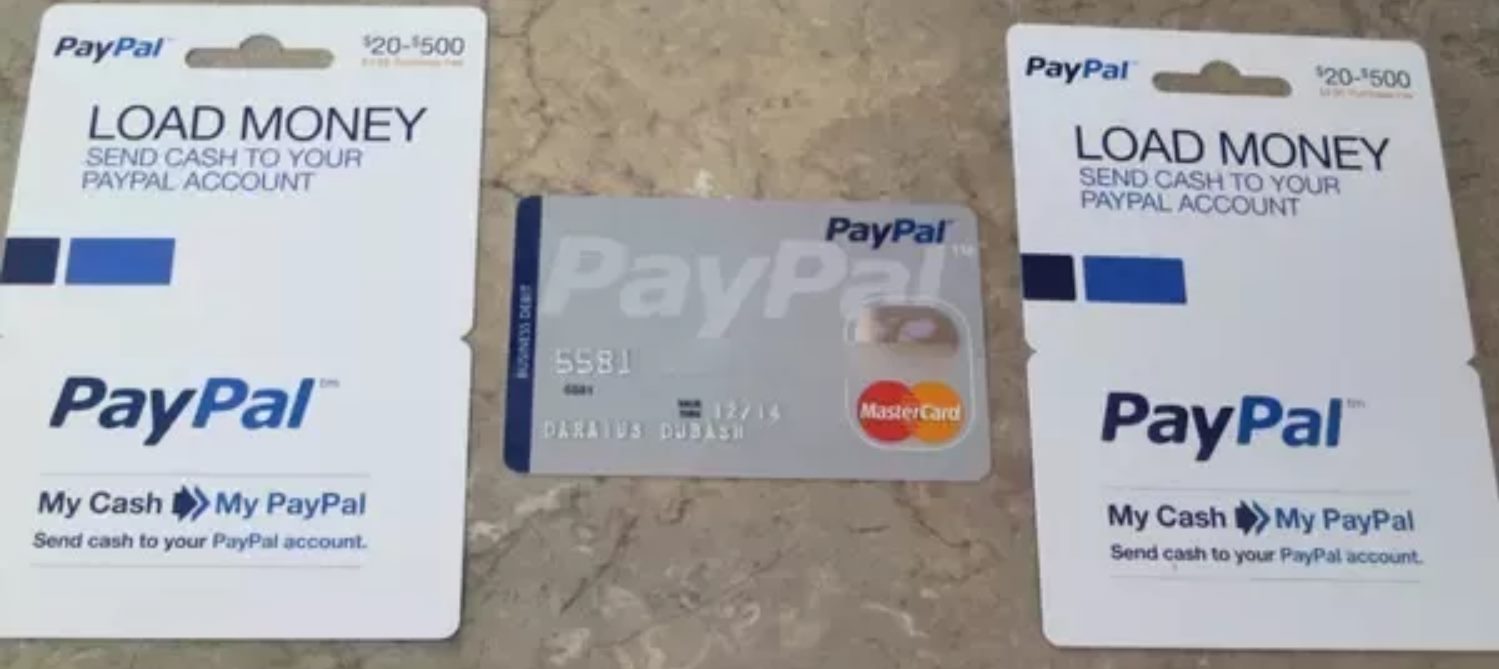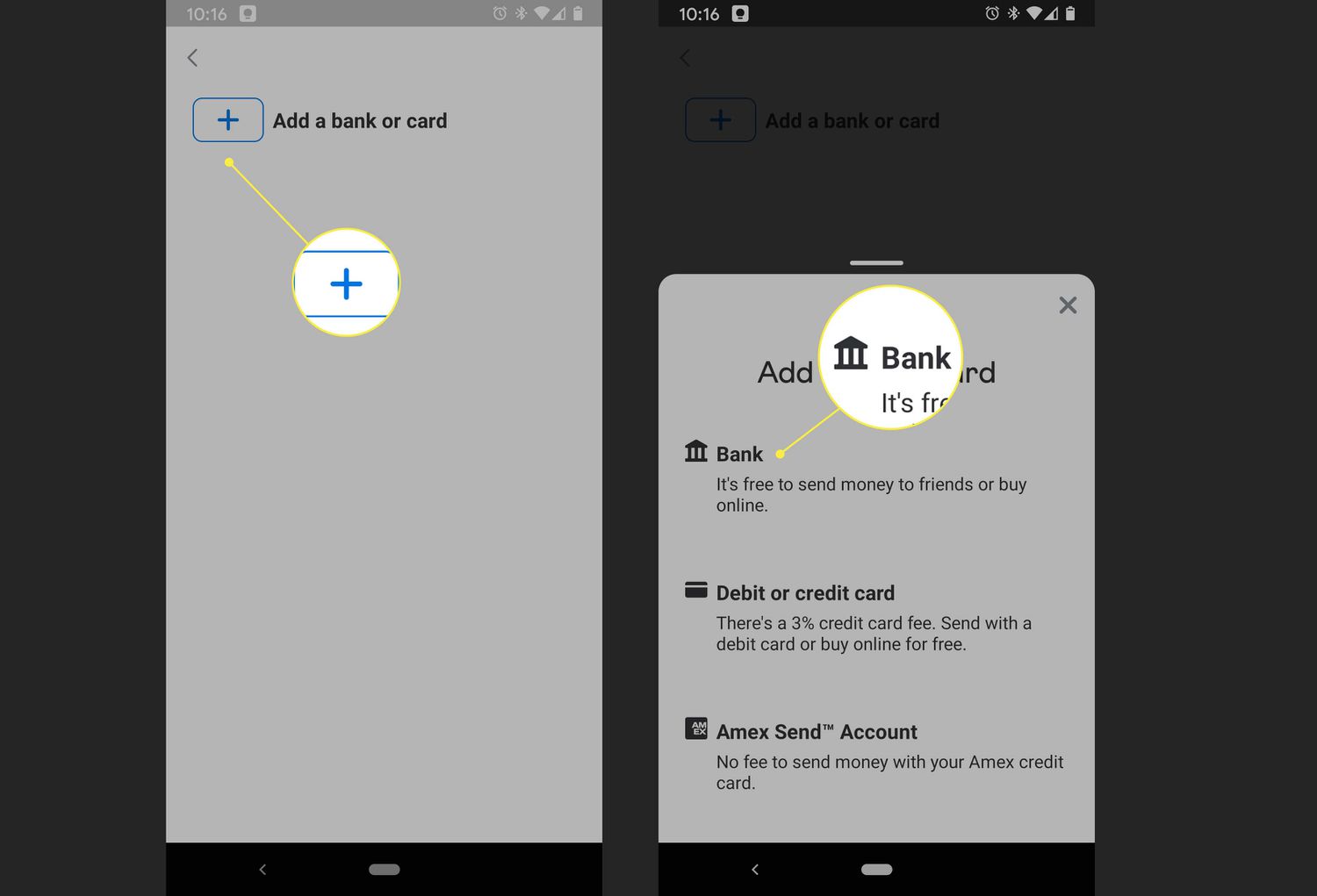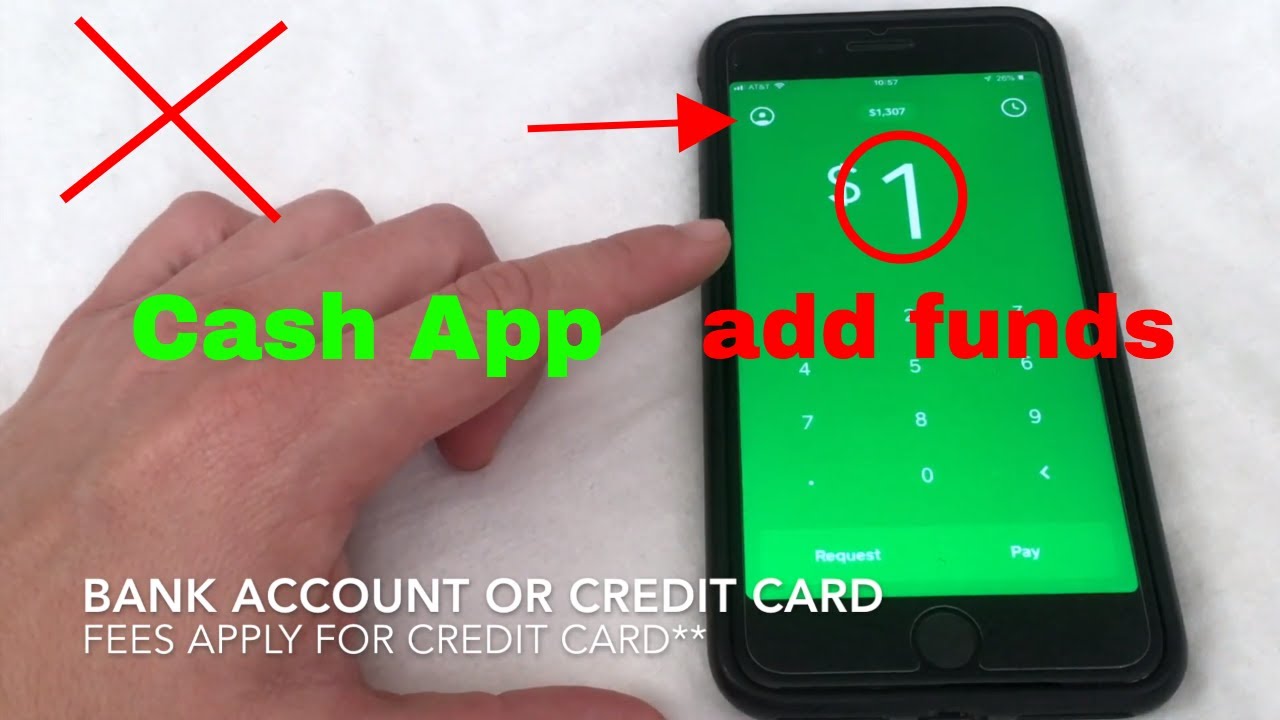Introduction
Welcome to the world of money transfer credit cards! If you find yourself in need of a financial solution that allows you to transfer funds from your credit card to your bank account, then you’ve come to the right place. In this article, we’ll explore what money transfer credit cards are, how they work, and the benefits they offer.
Money transfer credit cards provide a convenient way to access cash when you need it most. Whether you’re looking to consolidate debts, make a large purchase, or simply manage your finances more effectively, these cards can be a valuable tool in your financial arsenal.
With the ability to transfer funds directly from your credit card to your bank account, money transfer credit cards offer a quick and easy way to access cash. Unlike traditional loans, these cards typically come with a promotional period where you can enjoy a low or even 0% interest rate on the transferred amount for a set period of time.
However, it’s important to note that money transfer credit cards are not a magical solution to all your financial troubles. While they can be a great tool when used responsibly, it’s essential to understand how they work and consider the associated fees and interest rates.
Through this article, we’ll delve into the world of money transfer credit cards and provide you with the information you need to make an informed decision. Whether you’re a seasoned credit card user or new to the concept, we’ll equip you with the knowledge to navigate the world of money transfers.
So, buckle up and get ready to explore the ins and outs of money transfer credit cards. By the end of this article, you’ll have a clear understanding of their benefits, potential pitfalls, and tips for using them wisely. Let’s dive in!
What Is a Money Transfer Credit Card?
A money transfer credit card is a type of credit card that allows you to transfer funds from your credit card account to your bank account or another credit card account. This feature provides you with the flexibility to access cash quickly and conveniently, making it a valuable tool for managing your finances.
One of the key benefits of a money transfer credit card is the ability to consolidate debts. If you have multiple credit card balances or outstanding loans, you can use a money transfer credit card to pay off those debts and combine them into one manageable payment. Not only does this simplify your finances, but it can also potentially save you money by taking advantage of promotional offers, such as low or 0% interest rates on transferred balances.
Money transfer credit cards work similarly to balance transfer credit cards, which allow you to transfer existing credit card balances to a new card with a lower interest rate. However, with money transfer credit cards, you have the flexibility to transfer funds directly to your bank account, giving you the freedom to use the funds for various purposes, such as paying bills, making purchases, or even as an emergency fund.
It’s important to note that money transfer credit cards typically come with fees and interest rates. The fees can vary depending on the credit card issuer and the amount you transfer. Additionally, after the promotional period ends, the interest rate on the transferred amount may increase to the standard rate, so it’s crucial to be aware of the terms and conditions before applying for a money transfer credit card.
In summary, a money transfer credit card is a powerful financial tool that allows you to transfer funds from your credit card to your bank account or another credit card account. It offers the convenience of accessing cash quickly and can be used for various purposes, including consolidating debts. However, it’s essential to carefully consider the fees and interest rates associated with these cards to make an informed decision about their usage.
How Does a Money Transfer Credit Card Work?
A money transfer credit card works by allowing you to transfer funds from your credit card account to your bank account or another credit card account. This process can be done online, through your credit card issuer’s website or mobile app, or by contacting their customer service.
Here’s a step-by-step breakdown of how a money transfer credit card works:
- Comparison and application: Start by researching and comparing different money transfer credit cards available in the market. Look for cards that offer favorable promotional offers, such as low or 0% interest rates on transfers for a specific period. Once you find a suitable card, you can apply directly through the credit card issuer’s website or by filling out an application form.
- Approval and credit limit: After submitting your application, the credit card issuer will review your credit history and financial information to determine your eligibility. If approved, they will assign you a credit limit, which is the maximum amount you can transfer using the card.
- Initiating the transfer: Once you have your money transfer credit card in hand, you can initiate a transfer by logging into your credit card account or contacting the customer service. You will need to provide the details of the receiving bank account or credit card, including the account number and any other necessary information.
- Transfer processing: After submitting the transfer request, the credit card issuer will process the transaction. The timeframe for the transfer can vary depending on the issuer and the receiving bank or credit card company. It’s important to be aware that some transfers may take a few business days to complete.
- Promotional period and interest rates: Once the funds are transferred, you will enter the promotional period, during which you can enjoy low or 0% interest rates on the transferred amount. This promotional period typically lasts for a specific period, such as 6 months or 12 months. After the promotional period ends, any remaining balance on the transferred amount will be subject to the standard interest rate specified in the credit card terms and conditions.
- Repayment and fees: To avoid interest charges and fees, it’s important to make timely repayments on the transferred amount. You will receive monthly statements from your credit card issuer, detailing the minimum payment required and the due date. It’s advisable to pay off the transferred amount in full before the promotional period ends to avoid any additional interest charges.
Remember, it’s crucial to carefully read and understand the terms and conditions associated with a money transfer credit card before initiating any transfers. Be aware of any fees, interest rates, and repayment requirements mentioned by the credit card issuer.
In summary, a money transfer credit card allows you to transfer funds from your credit card account to your bank account or another credit card account. The process involves research and application, approval and credit limit assignment, initiating the transfer, processing the transfer, enjoying the promotional period, and repaying the transferred amount. Understanding the workings of a money transfer credit card will help you make informed decisions and utilize them effectively.
Benefits of Using a Money Transfer Credit Card
Using a money transfer credit card can offer several benefits that can help you manage your finances more effectively and save money. Let’s explore some of the key benefits of using a money transfer credit card:
- Consolidating debts: One of the main advantages of a money transfer credit card is the ability to consolidate debts. By transferring balances from multiple credit cards or loans onto a single card, you can simplify your finances and potentially save on interest charges. This consolidation can make it easier to manage and track your monthly payments.
- Low or 0% interest rates: Many money transfer credit cards offer promotional periods with low or 0% interest rates on transferred balances for a specific period. This can save you money on interest charges, especially if you have high-interest debts that you transfer to the card. Make sure to carefully review the terms and duration of the promotional offer to make the most of it.
- Flexibility to access cash: Money transfer credit cards provide you with the flexibility to access cash when you need it. Whether you’re facing an unexpected expense, need to make a large purchase, or have an emergency, being able to transfer funds from your credit card to your bank account gives you quick access to cash.
- Convenience and speed: Transferring funds from a money transfer credit card to your bank account is a simple and convenient process. It can be done online or by contacting the credit card issuer’s customer service. Compared to traditional loans or lines of credit, money transfer credit cards offer a quick and efficient way to access funds.
- Preserving credit limit: By using a money transfer credit card for cash needs, you can preserve your regular credit card’s available credit limit for other purchases. This allows you to maintain your credit utilization ratio, which can positively impact your credit score.
- Potential for rewards and benefits: Some money transfer credit cards offer rewards programs or additional perks, such as cashback on transfers, travel rewards, or purchase protection. By using the card for money transfers, you may be eligible to earn rewards or take advantage of other card benefits.
While money transfer credit cards offer these benefits, it’s important to use them responsibly. Make sure to carefully consider the fees and interest rates associated with the card, as well as your ability to repay the transferred amount within the promotional period.
By utilizing the benefits of a money transfer credit card and managing your finances wisely, you can take control of your debts, access cash conveniently, and potentially save money on interest charges. This can contribute to a more secure and confident financial future.
Things to Consider Before Applying for a Money Transfer Credit Card
Before applying for a money transfer credit card, it’s important to carefully consider several factors to ensure that it aligns with your financial needs and goals. Here are some key things to consider:
- Interest rates: Take the time to understand the interest rates associated with the money transfer credit card. While many cards offer low or 0% interest rates during the promotional period, it’s essential to know the standard interest rate that will apply after the promotional period ends. Ensure that the interest rates are competitive and manageable according to your financial situation.
- Promotional period duration: Pay attention to the length of the promotional period. Some money transfer credit cards may offer a shorter or longer promotional period. Consider your repayment capabilities and choose a card that provides enough time to pay off the transferred amount without incurring additional interest charges.
- Transfer fee: Money transfer credit cards often have fees associated with transferring funds. These fees are usually a percentage of the transferred amount. Compare different cards and find one with reasonable transfer fees to minimize your costs.
- Annual fee: Some money transfer credit cards may have annual fees. Consider whether the benefits and savings from using the card outweigh the annual fee. If you’re unlikely to use the card frequently, a no-annual-fee option might be more suitable for you.
- Impact on credit score: Transferring balances and opening a new credit card can impact your credit score. Be aware that applying for a money transfer credit card might result in a temporary decrease in your credit score due to the hard inquiry on your credit report. However, if you manage the card responsibly and make timely payments, it can have a positive long-term impact on your credit score.
- Repayment plan: Before applying for a money transfer credit card, assess your current financial situation and ensure that you have a repayment plan in place. Consider whether you’ll be able to make the monthly payments on the transferred amount within the promotional period. Failure to do so may result in higher interest charges and additional fees.
- Overall financial goals: Evaluate your overall financial goals and how a money transfer credit card fits into your financial strategy. Consider whether consolidating your debts or accessing cash conveniently aligns with your long-term objectives. It’s crucial to use the card responsibly and in a way that contributes positively to your financial well-being.
By carefully considering these factors, you can make an informed decision about whether a money transfer credit card is the right choice for you. Take the time to research different cards, compare their features and terms, and assess your own financial situation before applying.
A money transfer credit card can be a useful tool for managing finances, consolidating debts, and accessing cash conveniently. However, it’s important to stay vigilant and consider how the card aligns with your specific needs and goals.
Tips for Using a Money Transfer Credit Card Wisely
While a money transfer credit card can be a valuable financial tool, it’s important to use it wisely to maximize its benefits and avoid potential pitfalls. Here are some essential tips to help you use a money transfer credit card responsibly:
- Create a repayment plan: Before initiating a money transfer, assess your ability to repay the transferred amount within the promotional period. Create a realistic repayment plan that considers your monthly income and expenses. Stick to your plan to avoid incurring high interest charges.
- Understand the terms and conditions: Read and understand the terms and conditions of the money transfer credit card. Pay close attention to the promotional period duration, standard interest rate, transfer fees, and any other associated charges. Being aware of these details will help you make informed decisions and avoid surprises.
- Make timely repayments: Ensure that you make your monthly payments on time. Late or missed payments can not only result in hefty late fees but may also lead to the termination of the promotional period, causing the standard interest rate to apply.
- Refrain from new purchases: When you transfer a balance to a money transfer credit card, it’s important to avoid using the card for new purchases. The standard interest rate usually applies immediately to new transactions, which can hinder your efforts to pay off the transferred amount.
- Avoid minimum payments: While minimum payments are required to keep your account in good standing, it’s best to pay more than the minimum whenever possible. Minimum payments mainly cover interest charges, and carrying a high balance can result in a longer repayment timeline and increased interest costs.
- Monitor promotional period expiry: Stay vigilant and keep track of when the promotional period ends. Set reminders to ensure that you can repay the transferred amount before the standard interest rate takes effect. Paying off the balance within the promotional period will help you save on interest charges.
- Avoid credit card hopping: Constantly switching between money transfer credit cards to take advantage of promotional offers may negatively affect your credit score. It’s better to choose a card that aligns with your financial goals and use it responsibly for the long term.
- Review your progress: Regularly review your progress toward paying off the transferred amount. Monitor your credit card statements, track your payments, and adjust your repayment plan if necessary. Stay aware of your financial progress to ensure you’re on track to becoming debt-free.
By following these tips, you can use a money transfer credit card responsibly, manage your debts effectively, save on interest charges, and make progress towards your financial goals.
Remember, a money transfer credit card is a tool, and how you use it is essential. Responsible usage, timely repayments, and careful financial planning will help you make the most of this financial tool and build a strong foundation for your future financial well-being.
Comparison of Different Money Transfer Credit Cards
When considering a money transfer credit card, it’s crucial to compare different options to find the one that best suits your needs. Here are some key factors to consider when comparing different money transfer credit cards:
- Interest rates: Compare the interest rates offered by different cards, including both the promotional rate and the standard rate after the promotional period ends. Look for a card that offers a competitive interest rate, especially if you anticipate carrying a balance beyond the promotional period.
- Promotional period: Consider the duration of the promotional period. Longer promotional periods provide you with more time to pay off the transferred amount without incurring interest charges. Remember that shorter promotional periods may require higher monthly payments to pay off the balance within the given timeframe.
- Transfer fees: Assess the transfer fees associated with each card. Some cards may charge a percentage of the transferred amount as a fee, while others may offer promotional periods with no transfer fees. Compare the fees to determine the most cost-effective option for your specific needs.
- Annual fees: Take into account any annual fees associated with the money transfer credit card. Consider whether the benefits and savings from using the card outweigh the annual fee. If you don’t plan to use the card frequently, a no-annual-fee option might be more suitable.
- Rewards and benefits: Evaluate any rewards programs or additional benefits offered by the money transfer credit cards. Some cards may provide cashback on transfers or offer rewards for other types of purchases. Consider if these rewards align with your spending habits and financial goals.
- Credit limit: Compare the credit limits offered by different cards. Ensure that the credit limit is sufficient for your intended transfers and aligns with your financial needs. Be cautious about utilizing too large a portion of your available credit, as it can impact your credit score.
- Customer service and issuer reputation: Research the customer service and reputation of the credit card issuers. Look for issuers with a track record of excellent customer service, as well as positive reviews from other cardholders. Good customer service can make a significant difference when dealing with any issues or concerns that may arise.
By comparing these factors, you can identify the money transfer credit card that best suits your financial needs and goals. Carefully consider the terms and conditions of each card to ensure it aligns with your repayment capabilities and long-term financial plans.
Remember, using a money transfer credit card wisely is essential to maximize its benefits. It’s important to read the fine print, understand the terms and conditions, and make informed decisions based on your financial situation.
Take the time to compare different money transfer credit cards and choose the one that offers the most favorable terms, lowest fees, and best overall value for your specific financial needs.
Conclusion
Money transfer credit cards can be a valuable tool in managing your finances more effectively, consolidating debts, and accessing cash conveniently. Understanding how these cards work and using them responsibly are key to harnessing their benefits.
Before applying for a money transfer credit card, carefully consider factors such as interest rates, promotional periods, transfer fees, annual fees, and your overall financial goals. Compare different cards to find the one that best aligns with your needs and offers the most favorable terms.
Once you have a money transfer credit card, create a repayment plan, make timely repayments, and avoid new purchases. Monitor the expiry of the promotional period, review your progress, and adjust your plan as needed. By using the card wisely, you can save money on interest charges, consolidate debts, and improve your financial situation.
However, it’s important to use money transfer credit cards responsibly. Consider the impact on your credit score, be mindful of fees and interest rates, and ensure that you have a realistic plan for repayment. By doing so, you can make the most of these cards without falling into unnecessary debt.
Remember, a money transfer credit card is a tool that should be used in conjunction with proper financial planning and budgeting. It is not a solution to long-term financial challenges, but rather a means to help you manage your finances more effectively.
So, if you find yourself in need of consolidating debts, accessing cash conveniently, or simply managing your finances, consider exploring the world of money transfer credit cards. By understanding their benefits, researching different options, and using them responsibly, you can take control of your financial future and work towards a more secure and prosperous financial life.

























